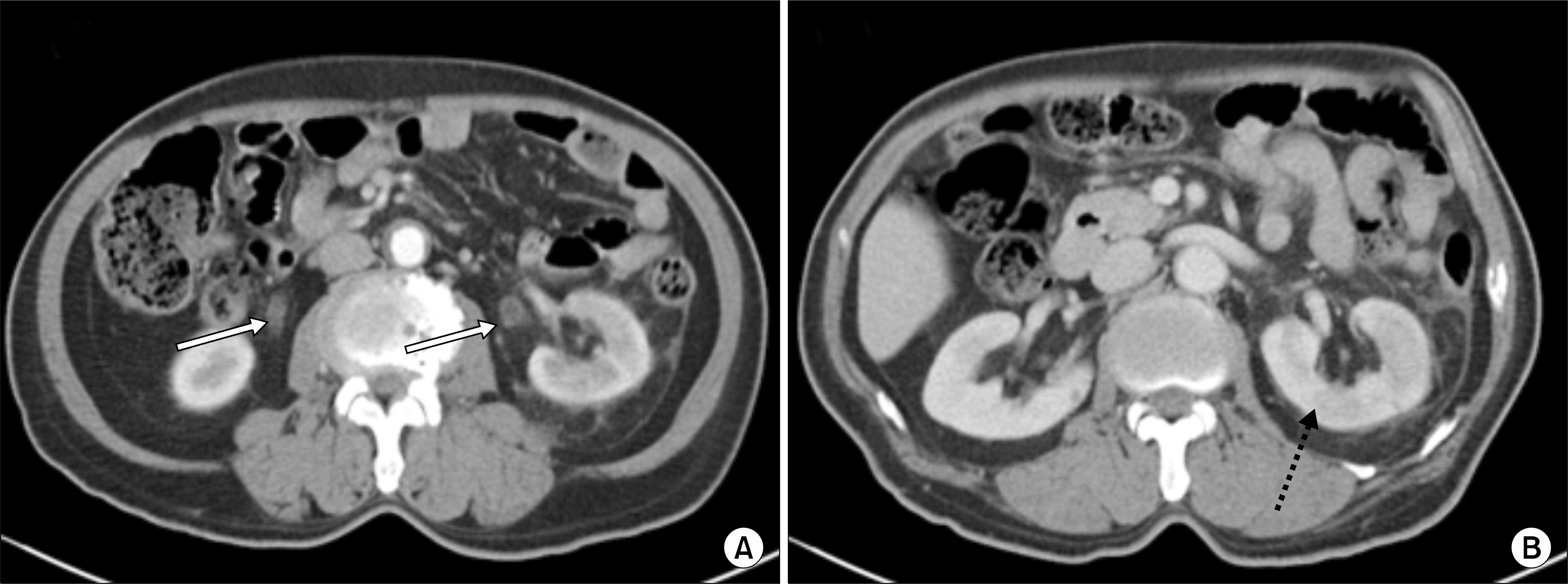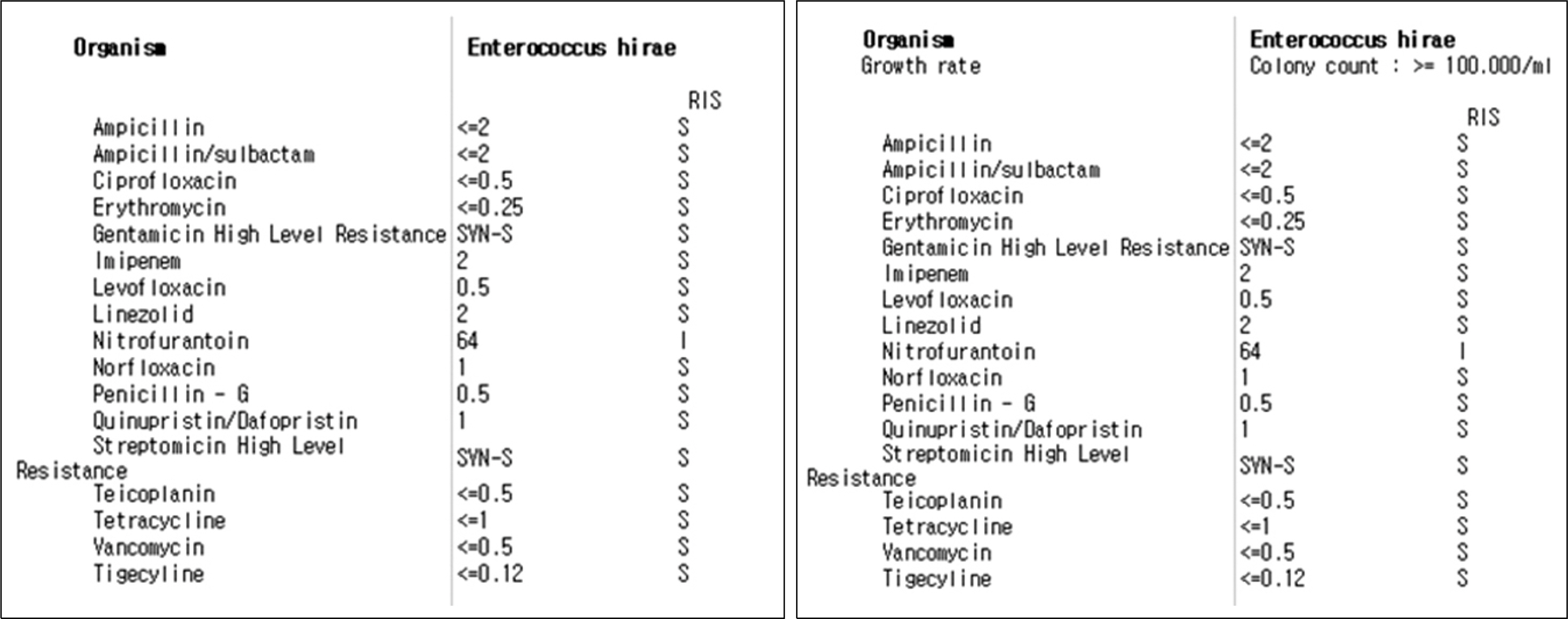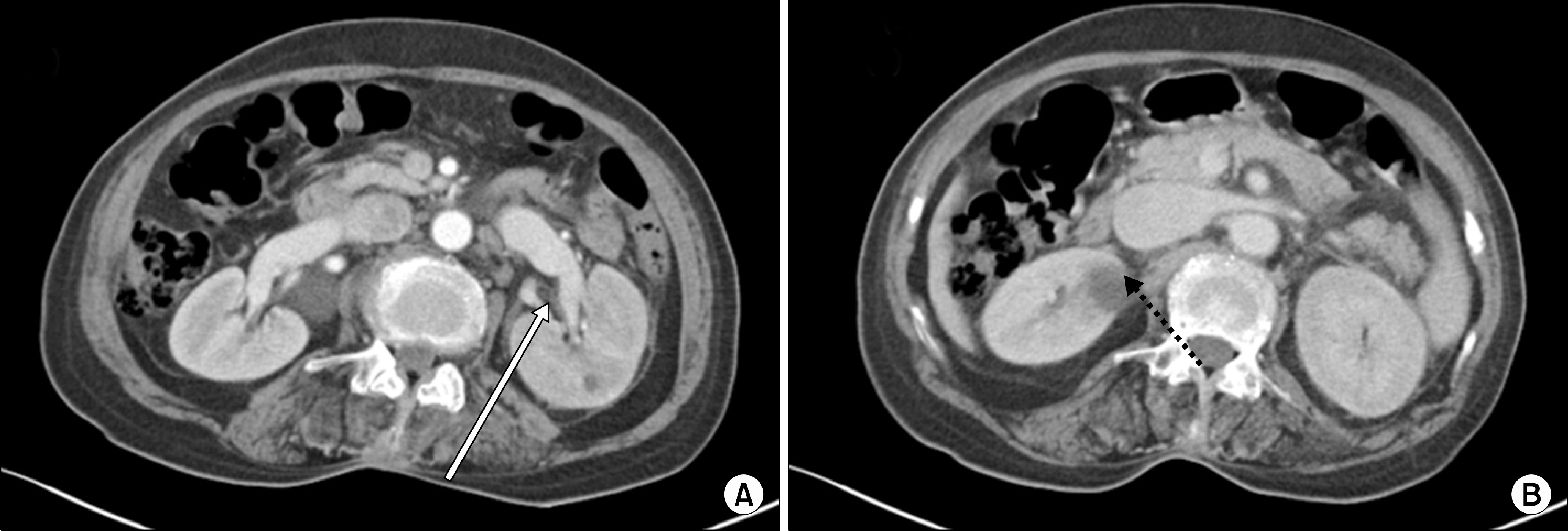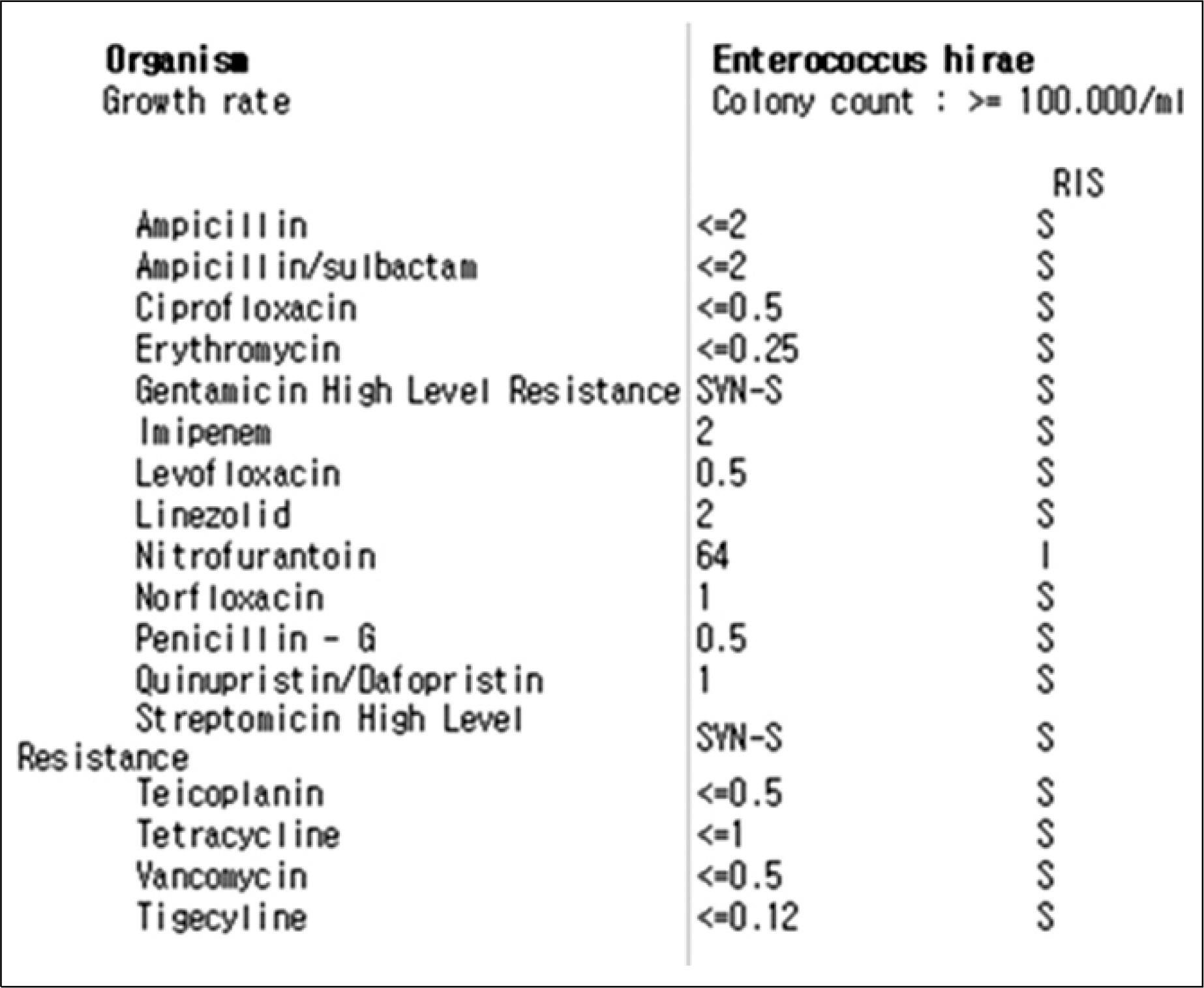Urogenit Tract Infect.
2017 Apr;12(1):49-53. 10.14777/uti.2017.12.1.49.
Acute Pyelonephritis with Enterococcus hirae and Literature Review
- Affiliations
-
- 1Department of Internal Medicine, Gimhae Jungang Hospital, Gimhae, Korea.
- 2Department of Internal Medicine, Inje University Haeundae Paik Hospital, Busan, Korea. pakssyung@hanmail.net
- KMID: 2378149
- DOI: http://doi.org/10.14777/uti.2017.12.1.49
Abstract
- To control for acute infectious disease, identification of the causative agent and determining the antibiotic susceptibility of the pathogen are crucial. If a particular organism is rare and relevant etiological information is scarce, it becomes difficult to determine appropriate antibiotic and therapy duration. Enterococcus hirae is a pathogen that infects animals, but rarely causes human infections. We present two cases of E. hirae-related pyelonephritis with successful treatment. Herein, our experience is discussed with relevant literature review.
Keyword
Figure
Reference
-
1.Canalejo E., Ballesteros R., Cabezudo J., Garcia-Arata MI., Moreno J. Bacteraemic spondylodiscitis caused by Enterococcus hirae. Eur J Clin Microbiol Infect Dis. 2008. 27:613–5.
Article2.Pai H. Treatment of community-acquired uncomplicated urinary tract infection. Korean J Med. 2011. 81:685–9.3.McNamara EB., King EM., Smyth EG. A survey of antimicrobial susceptibility of clinical isolates of Enterococcus spp. from Irish hospitals. J Antimicrob Chemother. 1995. 35:185–9.
Article4.Kim KH., Yoon JH., Kim TH., Yoon HJ., Cheon JY., Jin SJ, et al. A case of acute pyelonephritis caused by enterococcus hirae in a patient with a horseshoe kidney. Korean J Med. 2014. 87:369–72.5.Kim HI., Lim DS., Seo JY., Choi SH. A case of pyelonephritis accompanied by enterococcus hirae bacteremia. Infect Chemother. 2009. 41:359–61.6.Moore DF., Zhowandai MH., Ferguson DM., McGee C., Mott JB., Stewart JC. Comparison of 16S rRNA sequencing with conventional and commercial phenotypic techniques for identification of enterococci from the marine environment. J Appl Microbiol. 2006. 100:1272–81.
Article7.Chan TS., Wu MS., Suk FM., Chen CN., Chen YF., Hou YH, et al. Enterococcus hirae-related acute pyelonephritis and cholangitis with bacteremia: an unusual infection in humans. Kaohsiung J Med Sci. 2012. 28:111–4.
Article8.Paosinho A., Azevedo T., Alves JV., Costa IA., Carvalho G., Peres SR, et al. Acute pyelonephritis with bacteremia caused by enterococcus hirae: a rare infection in humans. Case Rep Infect Dis. 2016. 2016:4698462.9.Brule N., Corvec S., Villers D., Guitton C., Bretonniere C. Life-threatening bacteremia and pyonephrosis caused by Enterococcus hirae. Med Mal Infect. 2013. 43:401–2.10.Park J., Uh Y., Jang IH., Yoon KJ., Kim SJ. A case of enterococcus hirae septicemia in a patient with acute pyelonephritis. Korean J Clin Pathol. 2000. 20:501–3.
- Full Text Links
- Actions
-
Cited
- CITED
-
- Close
- Share
- Similar articles
-
- A Case of Pyelonephritis Accompanied by Enterococcus hirae Bacteremia
- A Case of Enterococcus hirae Septicemia in a Patient with Acute Pyelonephritis
- A Case of Acute Pyelonephritis Caused by Enterococcus Hirae in a Patient with a Horseshoe Kidney
- Enterococcus hirae Bacteremia Secondary to Urinary Tract Infection: A Case Report
- A Case of Green Nail Syndrome caused by Enterococcus durans and Enterococcus hirae





